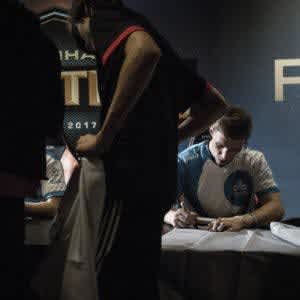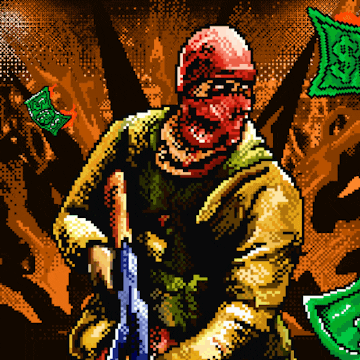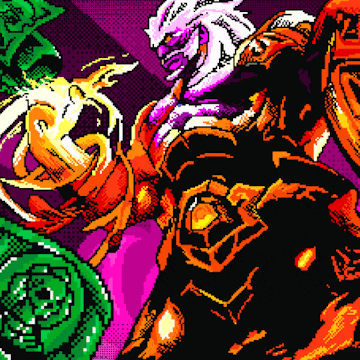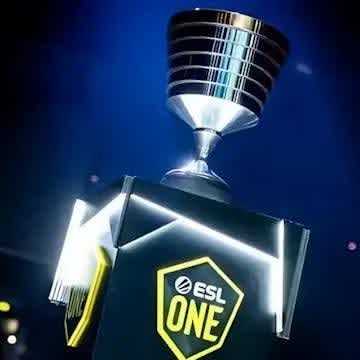Don’t Understate Cloud9’s Overperformance at The ELEAGUE Major: Boston
Cloud9 won the ELEAGUE Major: Boston. You already knew that, but given the surrealism of the statement, I think it bares repeating.
When Gambit won the PGL major, it was more than just a surprise. It the realization of a possibility somewhere between highly unlikely and nigh impossible, but under the analytical microscope, the feasibility of their accomplishment neatly came into focus. The right shift of their map pool here, the right bracket draw there, an overperformance at just the perfect point, and suddenly they could win the de facto world championship.
Relative to their field, Cloud9 at the ELEAGUE Major Boston were a better team than Gambit with Danylo "Zeus" Teslenko at the PGL Major Krakow, but when the more recent run bears the same magnification, the divergence is stark. Cloud9 should never have won this tournament. Too many factors were stacked against them. They bore the pressure of harsh circumstances, pushed through the difficulty of bad picks and rough match-ups, and had to run through a gauntlet of the world’s toughest competitors.
Came in as Challengers
While the majority of the discussion surrounding the changes to the major system had to do with prestige or history or sticker money, the most substantive change to in-game performance almost certainly revolved around the scheduling shift. With the Main Qualifier essentially becoming the “New Challengers Stage” taking place just days before the traditional main tournament, non-legend teams were given much smaller window of time to retool their playbook after advancing. Reflexively, Legends teams were given a more perfect window into the tactics, tendencies, and tics of their opponents right before the start of the main event.
Cloud9 came into the event with Challenger status instead of the Legends held by teams like BIG, Virtus.Pro, and Gambit, and therefore were directly hurt by the change to the system. Even before the tournament started, the North Americans were put at a disadvantage.
Down early in the Swiss
While the current version of the Swiss System used at Valve is regularly criticized for its extensive use of best-of-ones and the lack of seeding within pools, the swiss was originally lauded for its three chance system and for escaping the “group of death” problem inherent to the former format. Cloud9 got the worst of both worlds. The best-of-one system specifically hurt Cloud9 more than other teams as the North Americans have a more specific, narrow map pool which can be a liability in the more ban-rich single map system. But, additionally, Cloud9 got it fairly rough from the randomizer as their initial match-up was versus the suddenly resurgent G2 (in the Swiss at least). Even after losing their first two rounds versus G2 and Space Soldiers, Cloud9 also had to face other former greats in Virtus.Pro and Astralis, in addition to Vega Squadron who in the midst of their own overperformance with wins over Liquid, North, and FaZe.
But even after going down 0-2, matching with the giant that is VP (though currently slumbering if not comatose), playing a presumed contender in Astralis on their current best map, Train, and swimming with the emerging sharks, Cloud9 were still able to make the playoffs.
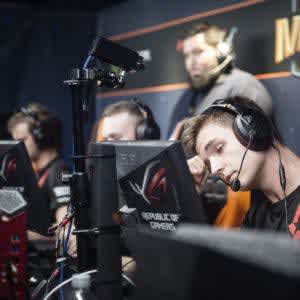
Poor Match-up Versus SK
After getting revenge on G2 in the quarterfinals, Cloud9 had to face another finals contender in SK Gaming. When I did my pre-major map by map rankings, a small motif that developed over the course of the article was this hidden rivalry between SK and Cloud9. Going into the Major as the world’s number one team with Ricardo "boltz" Prass, I ranked SK as top-four team on five different maps. Already, SK’s wider pool stands in contrast with Cloud9’s narrower pool, but it just so happened that C9’s three strong maps, Train, Mirage, Cobblestone, were destinations where SK excelled and ranked. The Brazilian team had a slightly better record the entire trio.
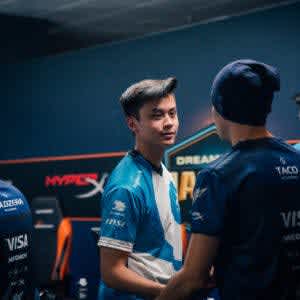
In this sense, SK is the worst possible match-up for Cloud9 in terms of the map pool. SK already had found success on maps like Cache and Overpass where Cloud9 had not, and they could also compete with and perhaps even excel on all the maps favored by C9 themsevles. Now, it’s true that the Boltz lineup that earned this record wasn’t the one that played the North Americans in the semi-finals, but surely Cloud9 would hardly be considered a favorite even versus the João "felps" Vasconcellos lineup who was more or less emulating the newer Boltz system. Still, Cloud9 strode over another increasingly lofty hurdle.
Weak Pick and Ban Phases
While the deck might have been stacked against Cloud9, they didn’t do themselves any favors within the pick and ban phase in the last two rounds of the tournament. Versus SK the process went as follows:
- Cloud9 banned Nuke
- SK bannedTrain
- Cloud9 picked Mirage
- SK picked Cobblestone
- SK banned Cache
- Cloud9 banned Overpass
- Inferno was left over
Cloud9’s first ban of Nuke stands out as a mistake. Both teams never play Nuke, so Cloud9 could have instead first banned something they felt less comfortable playing versus SK such as Cobblestone or Cache. From there, Cloud9 could have either forced SK to use their first or second ban on it or even played it at the end of a game-of-chicken-esque scenario as they did all the back at IEM Katowice 2017, a strategy that actually gave C9 an easy “w.” The team’s Coach, Soham "valens" Chowdhury, admitted the mistake in a post game interview with HLTV, stating:
“...we were going to veto Cobble first and then Nuke later in the second stage, because we know they've got a stand-in, they don't play Nuke in general, what's the point. But it was obviously my fault (laughs).
And we saw some similar inefficiencies versus FaZe:
- Cloud9 banned Nuke
- FaZe banned Cobblestone
- Cloud9 picked Mirage
- FaZe picked Overpass
- FaZe banned Train
- Cloud9 banned Cache
- Inferno was left over
Here, Cloud9’s first pick of Mirage stands out. While it’s pretty bold on its face to pick Mirage into FaZe, it’s certainly understandable given C9’s hot streak on the map at the Major itself. But instead they could have picked Train which traditionally has been this lineup’s best map and not a top pick for FaZe though they have improved on it recently. Assuming FaZe still would have picked Overpass, and Cloud9 would have still banned Cache, FaZe would be left to pick either Mirage or Inferno, one map Cloud9 very much wanted to play versus FaZe and another which they were okay with as the decider in the original pick and ban.
Even though Cloud9 were surprised by FaZe the last time they faced them on Train, I’d argue the North Americans would have had a better chance of beating FaZe on Train than Mirage knowing that Cloud9 did in fact lose their own pick and had lost to FaZe on it twice previously. I’d also argue that Cloud9 would rather play Train over Inferno given that Cloud9 had never excelled on Inferno with this lineup in sharp contrast to previous accolades of FaZe. Therefore, I think it follows that either Train-Overpass-Mirage or Train-Overpass-Inferno would have been preferable to the actual Mirage-Overpass-Inferno that actually happened.
Sibling Rivalry
With FaZe in the finals, the imbalance between the two teams was more than just a bad matchup or bad picks, this was the one opponent that Cloud9 absolutely should have been trounced by.
When this Cloud9 lineup first formed and started to show up to tournaments such as DreamHack Masters Malmo and ESL One New York, the mental gymnastics required to write them off as a pretender rather than a contender was hardly even a stretch. They failed to make it out of groups at Malmo with losses to SK and North. And while they tried to make it into the playoff at ESL One New York their 16-4, 16-3 pulverization by FaZe seemed to cement a status. Cloud9 could be a good team, maybe even a top-six team, but never great.
Because of this contrast with FaZe, Cloud9 hardly looked bright. They were are a compendium of very talented North American players, not a collection of international superstars or former superstars. Likewise, while both rosters are talented, only FaZe has a tried and tested in-game leader in the form of Finn "karrigan" Andersen while Cloud9 instead choose the far, far more novice Tarik "tarik" Celik to captain the team’s tactics.
Continuing on with the connections, both FaZe and Cloud9 shared a smaller three-map centric pool. However, while Cloud9 certainly looked to be one of the world’s leading teams on their trio, FaZe were was either a clear world leader or a clear second best on their preferred destinations: Overpass, Inferno, and Mirage. But further separating them, FaZe had a greater scene-wide advantage in that Mirage and Inferno have easily been the most popular two maps in the pool of the past six months in contrast to the more middling popularity of Cloud9’s Train and Cobblestone. And in the head-to-head, FaZe crushed Cloud9 for a second straight time and third straight time in best-of-threes at IEM Oakland and the ECS Season Four Finals. Across six maps and six Cloud9 losses, the North American side only won ten or more rounds once. Cloud9 were something of a poor man’s FaZe, their kid brother.
But perhaps what's most impressive about Cloud9’s usurpation of FaZe in the finals is that there is no caveat you can throw in to somewhat invalidate or even alleviate the upset. VP were on their last legs, Astralis role swapped and had their star player at less than 100%, G2 cooled off after the Swiss, SK had a pseudo-stand-in, but FaZe were immaculate; it was their tournament to win. You could correctly point out that Nikola "NiKo" Kovač didn’t perform nearly up to his near world-leading level early in the best-of-three apparently feeling pressure of his first Major final, but this was completely uncharted territory for Cloud9 as well. On Cloud9, only Tarik had even appeared in the playoffs of a Major before, and even then when he did so in the quarterfinals of MLG Columbus he played a very different role.
Cloud9 shouldn’t have won, couldn’t have won but did anyway. It should never be misremembered via a myopia of hype and hindsight, a naïveté of North American fans, or a outcome oriented way of thinking as something that was expected or bound to happen.
